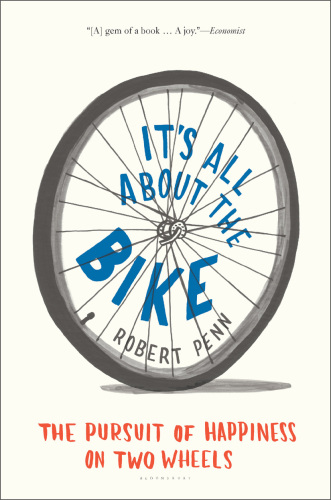
It's All About the Bike
The Pursuit of Happiness on Two Wheels
کتاب های مرتبط
- اطلاعات
- نقد و بررسی
- دیدگاه کاربران
نقد و بررسی

January 31, 2011
Wales resident Penn, a contributor to Condé Nast Traveler and various bicycle publications, has traveled 25,000 miles on a bicycle, and his expertise is evident. Seeking "craftsmanship, not technology," he met with top bike mechanics in order to customize an ergonomically efficient dream machine: "I want a bike that shows my appreciation of the tradition, lore and beauty of bicycles." Coasting past the large manufacturers who service the cycling masses, he visited the U.K.'s few remaining artisan frame builders, where he analyzed the angles of frame geometry: "Along with the immaculate fit and the right tubing material, geometry is an intrinsic part of buying a bespoke bicycle." As he writes about handlebars, gears, wheels, and saddles, each component gets a chapter, and the reader feels Penn's enthusiasm at seeing his steed assembled. Along the way, he looks back at bike history, beginning with the 1817 Draisine, propelled by paddling one's feet along the ground. Saddles were a concern to the conservative elements of Victorian society: "That bike riding might be sexually stimulating to women was a real worry." These pages are a delight, packed with facts, informative illustrations and two-wheeled tales, they map a path into the heart of cycling culture.

March 15, 2011
An enamored history of the bicycle alongside a lifelong cyclist's personal story of journeying to workshops throughout Europe and the United States to acquire his custom-built dream bike, part by part.
Debut author Penn finds an almost spiritual solace in cycling, riding for "a broad church of practical, physical and emotional reasons." The author's ability to describe the joys of bicycling—the space for thought that the rhythm creates, the freedom of swooping down a hill, the satisfaction of having pedaled to the top—is one of the book's strengths, along with anecdotes of his experiences cycling around the world years earlier. After biking for decades on dozens of models, Penn decided it was time to choose the one: a bicycle perfectly fitted for him and made to last 30 years. He spared no expense or effort, visiting the shops where the components were handmade by craftsmen who still consider building a bike an art. Each chapter is about a different part of the bike: the frame/wheels/saddle, etc., the philosophies and personalities of their makers and the parts' roles in the history of the machine. The prototype of a bicycle was surprisingly not invented until 1817 during a horse shortage. Pedals, ball bearings, "high-wheelers" and chains followed, and the world's first modern bicycle, the Rover Safety, was born in 1885. The working class became mobile, the Tour de France was inaugurated in 1903, the arrival of the automobile almost eclipsed the bike and some California hippies saved the industry with the mountain bike. Penn believes the bicycle is now entering another golden age, when health and environmental concerns increase its relevancy. This chronology often folds over on itself with chapters organized around specific bike parts, but the author manages to avoid the stagnancy of linear history or the more common error of making it all about himself.
If you don't long for your own bike at the end of this book, you will at least never look at one the same way again.
(COPYRIGHT (2011) KIRKUS REVIEWS/NIELSEN BUSINESS MEDIA, INC. ALL RIGHTS RESERVED.)

























دیدگاه کاربران